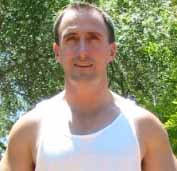Just like the young, older people can gain many benefits from exercising. Life can be made a lot easier through improvements in strength, balance, coordination, and mobility. If the person has not exercised for a while, they must start slow. Even walking 10 minutes per day will give them great benefits.
Weight training is also a great option. Start them on a 20 minute program (3-4 exercises), and increase them from there as they adapt. Keep sets at 2-3, reps at 10-15, and the rest interval between sets at 90 seconds.
The facts:
· Improvements in fitness and oxygen consumption with training are similar for younger or older men and women. Though, an older person will generally start at a lower level and peak at a lower level than a younger person.
· Older subjects show greater gains in muscle oxidative enzyme activities.
· Aging appears neither to impair the ability to improve muscle strength nor prevent muscle growth.
· Exercise can help arthritic patients by increasing strength and mobility.
Older people who exercise have:
· Higher VO2max values and half the expected decrease in VO2max due to age
· Higher HDL cholesterol and lower LDL cholesterol
· Enhanced glucose tolerance and insulin sensitivity
· Greater strength, reaction time, and a lower risk of falling
· Increased bone density (reduced chance of osteoporosis)
Guidelines:
· Always get a medical examination and clearance before starting an exercise program.
· All equipment should be safe and inspected regularly for defects.
· Training equipment should be located in an uncrowded area.
· There must be adequate supervision by an experienced and registered trainer to ensure correct technique is used.
· Programs should start with regular stretching and strengthening exercises, with a progression to more dynamic aerobic activities. Cycling and swimming are recommended over jogging.
· Older people are generally less tolerant of environmental stress so restrict training in extreme temperatures.
· Until they are experienced in weight training, only use exercises that require them to keep both feet on the ground (e.g. Squats instead of Lunges). This will reduce their risk of falling and injuring themselves.
· Ensure all abdominal work is done on the floor and not on the Swiss Ball.
· Only light lifting should be done above the head.
· No isometric exercises.
_____________________________________________________________________________
Ray Kelly has helped over 5000 people achieve their health and fitness goals. Living a healthy lifestyle can be easy. Check it out at: Free Tips on Weight Loss and Heart Disease!
Sunday, August 14, 2005
Subscribe to:
Post Comments (Atom)

No comments:
Post a Comment